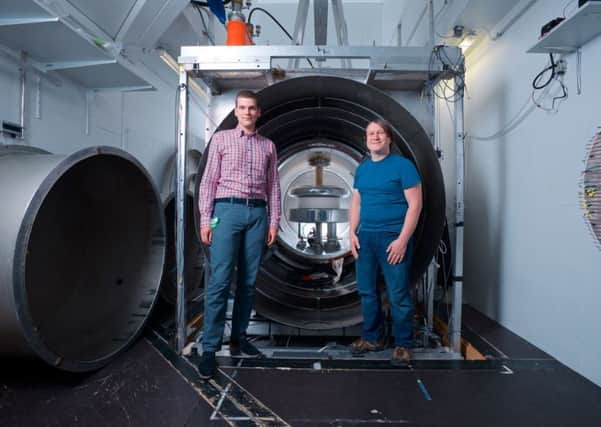Analysing hidden secrets of the universe at Brighton


Scientists at the university of Sussex have disproved the existence of a specific type of axion - an important candidate ‘dark matter’ particle - across a wide range of its possible masses.
Professor Philip Harris, Head of Mathematical and Physical Sciences at the University of Sussex, and head of the nEDM group there, said: “Experts largely agree that a major portion of the mass in the universe consists of ‘dark matter’.
Advertisement
Hide AdAdvertisement
Hide Ad“Its nature, however, remains completely obscure. One kind of hypothetical elementary particle that might make up the dark matter is the so-called axion. If axions with the right properties exist it would be possible to detect their presence through this entirely novel analysis of our data.
“We’ve analysed the measurements we took in France and Switzerland and they provide evidence that axions – at least the kind that would have been observable in the experiment – do not exist.
“These results are a thousand times more sensitive than previous ones and they are based on laboratory measurements rather than astronomical observations. This does not fundamentally rule out the existence of axions, but the scope of characteristics that these particles could have is now distinctly limited.
“The results essentially send physicists back to the drawing board in our hunt for dark matter.”
Advertisement
Hide AdAdvertisement
Hide AdA statement from the university says that it has been believed for decades that axion particles might make up at least some of ‘dark matter’ – the stuff that we know is in our universe but which cannot be seen.
Axions are important because finding them, if they exist, could hold the key to why the universe has lots of matter but relatively little anti-matter. Equal amounts of matter and anti-matter would have been created when the universe began, and it should all have mutually annihilated, but the Universe clearly now has plenty of matter – but essentially no anti-matter – left over; we do not understand why.
Nicholas Ayres, a graduate student in the School of Mathematical and Physical Sciences at the University of Sussex and co-leader of this particular analysis, said: “These results open a new front in the hunt for dark matter. They disprove the existence of axions with a wide range of masses and therefore help to limit the variety of particles which could be candidates for dark matter. And it’s fantastic to see that these results – which were being collected for another purpose entirely – could be used as a piggyback to search for axions too.”
However, the experiment does not rule out the existence of axions entirely.